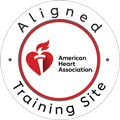[vc_row][vc_column width=”2/3″][vc_column_text]CPR (Cardiopulmonary Resuscitation) training is a crucial skill that empowers individuals to save lives during emergencies. In this article, we will explore the significance of CPR training and delve into the statistics on cardiac arrest and survival rates. By understanding the fundamentals of CPR, the Chain of Survival, and recognizing cardiac arrest in different age groups, you’ll be equipped to respond effectively in emergency situations. Additionally, we’ll discuss the importance of CPR certification and provide guidance on finding reputable training courses in Columbus, OH.
Importance of CPR Training
Cardiac arrest is a leading cause of death worldwide, and the immediate administration of CPR can significantly improve a person’s chances of survival. By learning CPR, you become a crucial link in the Chain of Survival, offering vital assistance until medical professionals arrive. Taking the time to get trained in CPR demonstrates your commitment to the safety and well-being of those around you.
Understanding Cardiopulmonary Resuscitation (CPR)
Definition and Purpose of CPR:
CPR is a life-saving technique that combines chest compressions and rescue breaths to maintain blood circulation and oxygen supply to the brain during cardiac arrest. Its primary goal is to keep the vital organs functioning until professional medical help arrives. How CPR Works to Save Lives: During cardiac arrest, the heart stops beating effectively, depriving the body of oxygen. CPR helps maintain blood flow, providing oxygen to the brain and other vital organs until a defibrillator or other medical interventions can be administered. Common Causes of Cardiac Arrest: Cardiac arrest can result from various factors, including heart attacks, electrical abnormalities in the heart, drowning, choking, and drug overdoses. CPR can be a crucial intervention in all these scenarios.
The Chain of Survival
The Chain of Survival is a sequence of critical actions that, when performed promptly, can maximize the chances of survival for someone experiencing cardiac arrest.
- Early Recognition of Cardiac Arrest: The first step is identifying the signs of cardiac arrest promptly, such as sudden collapse, unresponsiveness, and absence of breathing or abnormal gasping.
- Prompt Activation of Emergency Medical Services (EMS): Calling emergency services immediately is vital to ensure that professional help is on its way while you initiate CPR.
- Early CPR Initiation: Starting CPR early helps maintain blood circulation, providing oxygen to vital organs. Effective chest compressions are the cornerstone of this step.
- Rapid Defibrillation: A defibrillator delivers an electric shock to the heart, potentially restoring its normal rhythm. Accessing and using an automated external defibrillator (AED) as soon as possible is crucial for survival.
Recognizing Cardiac Arrest in Adults, Children, and Infants
Recognizing cardiac arrest requires understanding its common signs and symptoms, such as sudden loss of consciousness, absence of pulse, and no normal breathing. While the fundamentals of CPR remain the same, there are important differences in performing CPR on adults, children, and infants. Adjustments in compression depth, rate, and technique are necessary based on the age group. For adults, the compression depth should be around 2 inches, while for children, it should be about 2 inches or 1/3 of the chest depth. For infants, compressions are performed using two fingers and a depth of only 1.5 inches (still 1/3 of the chest depth).
CPR Certification and Training
CPR certification programs are designed to provide individuals with the necessary knowledge and skills to perform CPR effectively. These programs typically include hands-on training, simulations, and assessments to ensure proficiency. Different organizations offer CPR certification, the American Heart Association (AHA) is the leading authority on CPR, and CPR Columbus is an AHA Authorized Training Center. To find CPR training courses in Columbus, OH visit CPR Columbus to see all available dates and times for our various CPR courses. Formal CPR training offers several benefits beyond just learning the technique. It provides a more detailed understanding of cardiac emergencies, enhances confidence in responding to emergencies, and equips individuals with the ability to adapt to various scenarios. CPR certification also demonstrates a commitment to safety and can be valuable in both personal and professional settings. CPR training is a critical skill that empowers individuals to save lives during cardiac emergencies. Understanding the importance of early recognition, activating emergency services, initiating CPR, and accessing defibrillation can significantly increase the chances of survival for someone experiencing cardiac arrest. By recognizing the unique aspects of CPR for different age groups and obtaining formal CPR certification, you become a valuable asset in your community. Don’t wait for an emergency to strike before seeking CPR training. Take the initiative to enroll in a CPR certification Columbus program today. By becoming a certified lifesaver, you contribute to a safer and more prepared society. Remember, your actions can make a life-saving difference. Stay informed, stay trained, and be ready to be the key to someone’s survival. Act now and be a part of the chain that saves lives—because every second counts. [/vc_column_text][/vc_column][vc_column width=”1/3″][vc_single_image image=”19419″ img_size=”large”][vc_single_image image=”5713″ img_size=”large”][vc_single_image image=”19459″ img_size=”large”][vc_single_image image=”19415″ img_size=”120×120″][vc_wp_text el_class=”sidebar-review”]
Call Us Now
Get the Best CPR Class in Columbus Today!
[grw id=”20497″]
[/vc_wp_text][/vc_column][/vc_row]


